Rain Gardens: Good for You, Biodiversity, Groundwater, and Much More!
The promise of increased rainfall during the autumn months, in addition to major weather events like the recent Hurricane Sandy, serve as reminders of the need to manage excess water in responsible, effective ways. A simple, aesthetically pleasing solution for water management in the home garden is to install a “rain garden.” Rain gardens are multi-functional: they slow and collect excess water runoff, replenish groundwater, reduce ground pollutants, provide wildlife and insect habitat, increase wildlife and insect numbers and diversity, and beautify your garden.
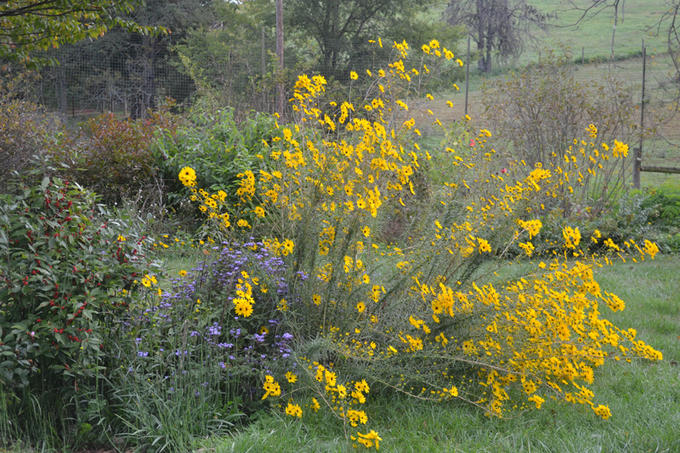 Rain garden in mid-October at the Thomas Jefferson Center for Historic Plants.
Rain garden in mid-October at the Thomas Jefferson Center for Historic Plants.Several years ago at the Thomas Jefferson Center for Historic Plants here at Monticello, we installed a small rain garden near the bottom of our sloped landscape, between the plant nursery and a bed of native shrubs. We found that this area was often overly soggy due to both the lie of the land, as well as the occasional runoff from the automated watering system lining the cold frames located just above this site. A 12-foot-long trench and a 6’x6’, shallow, circular basin were dug and lined with rocks. We then planted an assortment of native shrubs and perennials in spaces intentionally left between the rocks and around the edge of the basin. These plants work to filter out the excess fertilizers which may be carried in the runoff from the cold frames, keeping unwanted chemicals from leaching into the groundwater.
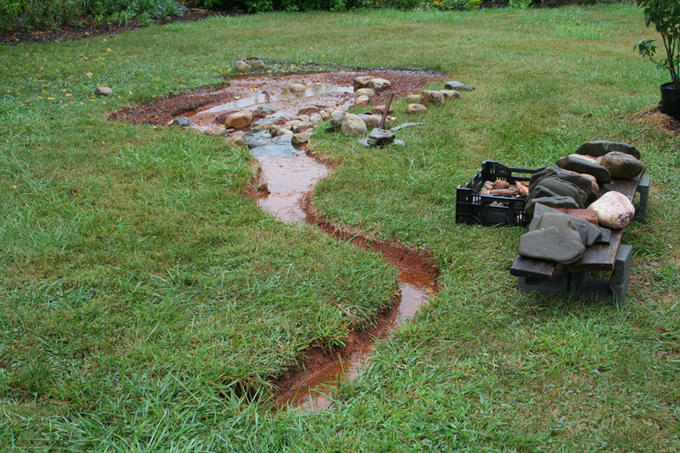 Construction of the Center's rain garden in 2008.
Construction of the Center's rain garden in 2008.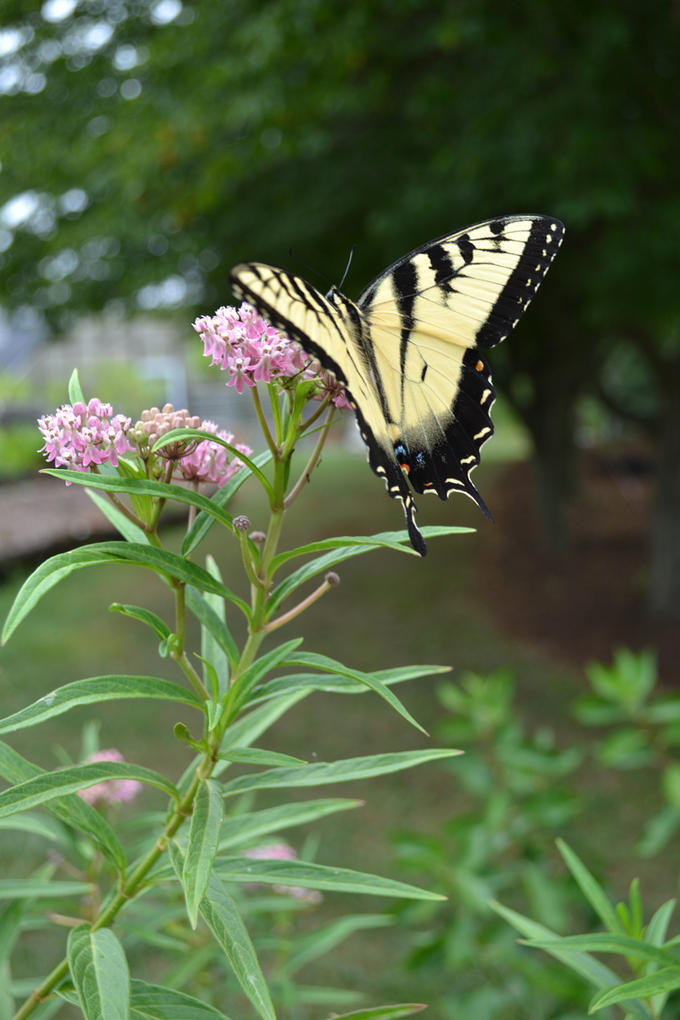 An Eastern Tiger Swallowtail enjoying the flowers of the Swamp Milkweed.
An Eastern Tiger Swallowtail enjoying the flowers of the Swamp Milkweed.Our rain garden has matured nicely over the years, becoming an attractive garden feature in its own right. By mid-summer, moisture-loving natives like the pink-flowering Swamp Milkweed (Asclepias incarnata) and the strikingly red Cardinal Flower (Lobelia cardinalis) attract loads of butterflies and other pollinators. In addition, Swamp Milkweed is a food source for Monarch caterpillars, and hummingbirds fight over access to the Cardinal Flower. Spreading around the base of these taller flowering plants is the Scouring Rush (Equisetum hyemale), which is native to wetlands in a number of regions around the world, including the United States. As the common name indicates, this plant was once used to scour pots and pewter, due to its high silica content. While the strong verticality and unusual appearance of the evergreen stems provide year-round interest, Scouring Rush has a tendency to spread, so it is best to use soil barriers or plant in a large pot or tub.
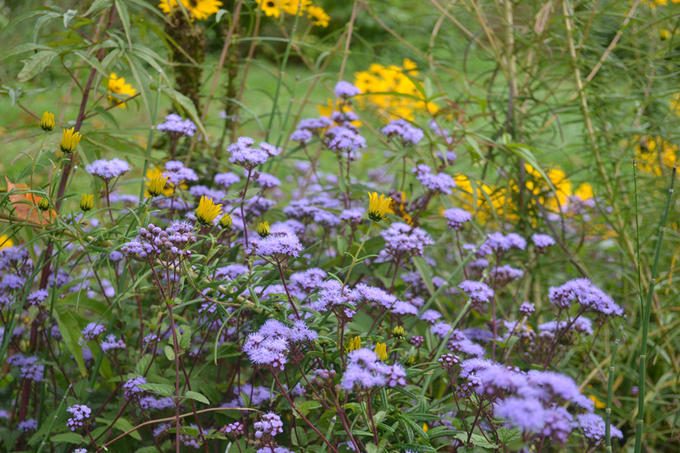 Blue Mist Flower (Eupatorium coelestinum)
Blue Mist Flower (Eupatorium coelestinum)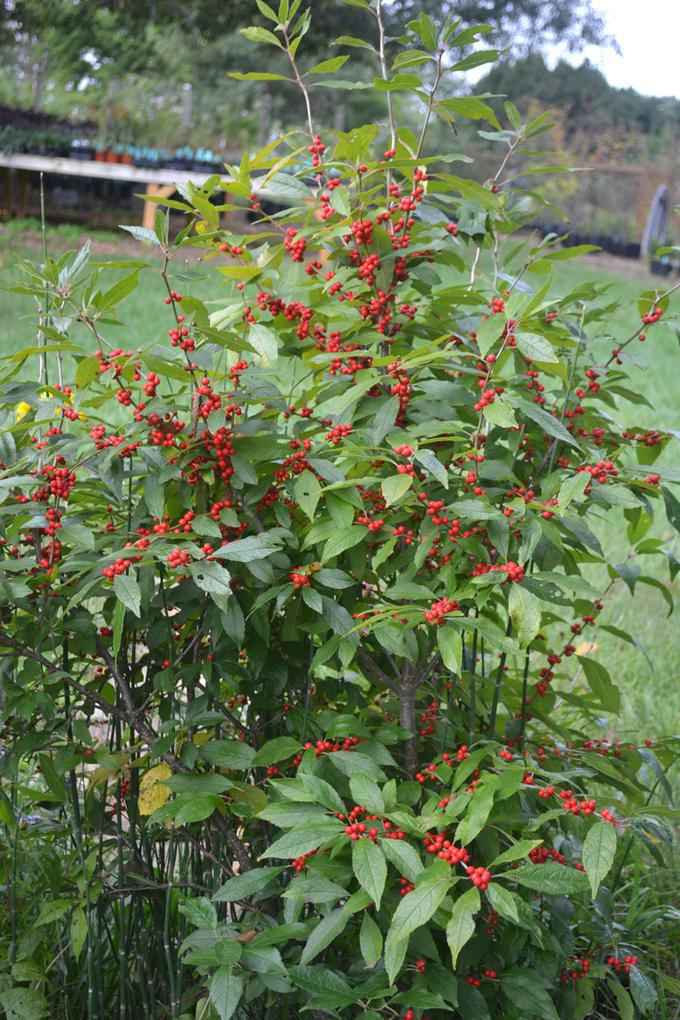 Winterberry Holly (Ilex verticillata)
Winterberry Holly (Ilex verticillata)As the days become shorter and the temperatures drop, our rain garden reaches its peak. In early autumn, the numerous blooms of the Blue Mist Flower (Eupatorium coelestinum) create a soft cushion of violet-blue. A native that prefers wet ground, Blue Mist Flower is low-maintenance, naturalizes easily, and makes an impact in a mass planting. Eventually rising high above the Blue Mist Flower are the flowering stems of the Swamp Sunflower (Helianthus angustifolius). Clusters of bright yellow flowers line the 6-10ft stems, drawing you toward this native sunflower from across the garden. The botanical name angustifolius refers to the narrow (and deep green) leaves, which differentiate this perennial sunflower from the standard annual varieties. Since the Swamp Sunflower grows rather tall, cut the stems back by one-third in early summer, or staking may be required. Prolonging the beauty of the rain garden from fall into winter is the Winterberry Holly (Ilex verticillata). This deciduous holly loses its leaves in late fall to reveal branches covered in plump red berries that often persist until early spring and provide food for birds such as Cedar Waxwings and Bluebirds. Because Winterberries have separate male and female plants, and only the females produce berries, be sure to plant one male Winterberry somewhere in your garden to assist in pollination.
So, with a little effort, even a small rain garden can offer many rewards to the home gardener, the local wildlife, and the neighboring creeks, ponds, and rivers. A selection of native, moisture-loving plants and seeds can be found at www.monticelloshop.org


